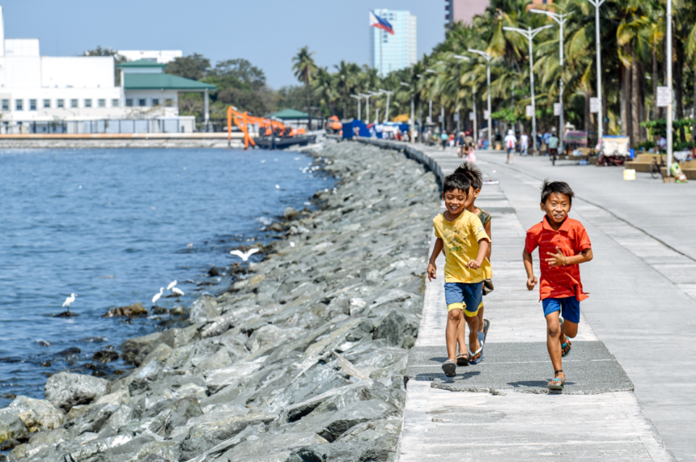AN ENVIRONMENTALIST cautioned against reclamation projects at the Manila Bay, warning of sea level rise and coastal erosion that would put nearby communities at risk.
Rising sea levels would have a “significant impact” on reclaimed land, which is highly susceptible to liquefaction, a process resulting in reduced soil stability, said UST alumnus
Rodne Galicha, country manager of The Climate Reality Project Philippines.
Around 5.5 million people stand to be affected by high liquefaction, he said.
“Higher sea levels can saturate the sandy soil usually found along the coasts, making the lands even more unstable.” Galicha told the Varsitarian.
Reclamation is the process of cultivating submerged land or waste land, making the area suitable for building infrastructures or for other purposes.
Reclamation
Last Feb. 1, President Duterte signed Executive Order 74 which transfered the power of approving reclamation projects from the National Economic and Development Authority (NEDA) to the Philippine Reclamation Authority (PRA), which is now under his office.
PRA Assistant General Manager Joselito Gonzales reportedly said at least 22 proposed reclamation projects in Manila Bay covering 20,000 hectares have yet to be approved by the DENR.
Galicha argued that reclamation projects would pollute the waters of Manila Bay, contributing to the degradation of natural ecosystems and endangering thousands of lives.
“Land reclamation would not benefit these people in any way, but it will also put them at higher risk to hazards,” he said, citing a government report that pegged the number of informal settlers around the bay at 180,000 families.
Disastrous
The Archdiocese of Manila earlier criticized the planned reclamation at the Manila Bay because of its negative impact on the ecology and the poor.
“It is a project for the rich and foreigners while the poor will suffer due to congestions and floodings in Manila,” Manila Auxiliary Bishop Broderick Pabillo told CBCP News last month.
In a 2013 letter to then President Benigno Aquino III, Manila Archbishop Luis Antonio Cardinal Tagle warned that while reclamation projects would enhance business and tourism, they would result “in disastrous flooding.”
Tagle and fellow bishops said these projects should not be “determined only by financial considerations.”
“Will the projected economic gains sufficiently and justifiably compensate the damages in life, ecosystems and property in the future?” they asked.
‘Band-aid solution’
Galicha described as a “band-aid solution” the massive clean-up of the Manila Bay, which began on Jan. 27.
Rehabilitation, he said, should not be limited to the baywalk area but also involve “nearby provincial coastlines and the coastal and marine ecosystems in it.”
“Its rehabilitation will not be finished by merely picking up garbage along the coasts,” he said.
Disposal
Manila bay is the final destination the Laguna de Bay–Pasig River–Manila Bay Watershed, where water from more than 50 sub-basins is drained.
“If you’re going to throw a piece of paper in Laguna Lake, since [it] is connected to the Manila Bay [through] the Pasig River, that paper, combined with other papers along the way, would eventually dump into the Manila Bay,” said UST professor Arlen Ancheta, head of the government-funded Manila Bay Studies project.
Ancheta said communities should be educated on proper waste disposal,
“Doon pa lang, inuumpisahan na para hindi na lahat pumunta roon sa cleanup,” she told the Varsitarian.













